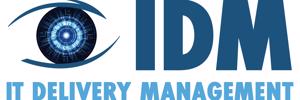For a fully controlled, no-hassle Windows 10 migration and upgrade process in your enterprise, eReadiness by IDM is the preferred tool. According to IT departments that tested eReadiness in their environment, it is both powerful and practical. One particular feature that helps take control is the planning tool. Join me on a quick tour!
Before we start off, you should know there is no shortage of tooling in the world to manage upgrade and update procedures. Many products operate in a rather complex fashion, similar to the time-consuming DIY Excel-sheet approaches that are still common in many IT departments. What surprises me most is that in some cases, these solutions do not offer an overview nor a decent outlook at all of what is coming. Nor do they allow organisations to stay in control of their migration and upgrade processes – at their own pace.
Your own road map & time path
One of the neat qualities of the feature we highlight here is that it actually does that. It allows an organisation to choose its own order or actions and its own road map & time path, instead of compulsively following the deadlines that Microsoft’s end-of-life messages dictate.
Complex becomes uncomplicated
Furthermore, eReadiness impressed the most demanding test experts for how it makes complex operations uncomplicated – and how it makes an organisation ready to start migrating. Such a process can only start with a good overview of the size and complexity of the project of migrating and updating before the end of life date.
The planning/monitoring tool shows you which clients are active, on what software, with the actual and future support status. Depending on how you configured the tool, it offers insight in the total project load and in the progress of the actions you have taken towards migration or update.
Prioritise: mission-critical or not
eReadiness’ planning/monitoring tool offers a view of the different software used in the organisation and, even more important, what software is mission-critical to the organisation and needs to be treated with priority. It also signals problems that may lie ahead with applications; software may be faced with problems dealing with the upgrade/update and therefore need extra attention from software vendors – a matter you best solve in time. Knowing the software ‘landscape’ also offers a choice: you can decide what software/solution will be obsolete soon and can be made redundant, saving licences and maintenance.
Small or bigger waves
Another choice that the planning/monitoring tool allows you to make: you can decide what number of computers you want to upgrade in one run. This may be extremely helpful, as it means you can start with waves of small numbers of clients at the start of an upgrade cycle and build the numbers later on.
One of the best compliments we received was from an IT manager after having worked with eReadiness for the first time: “This makes such a complex process so easy. eReadiness actually shows progress in every project phase, with clear signals, positive or negative.” Meaning: clear signals of what to do next, what steps to take, what applications will get in trouble after an upgrade/update, requiring immediate action.
Clarity instead of black box
In other words: eReadiness offers clarity, instead of a ‘black box’ that leaves everybody guessing if software x or y may continue to work well after the upgrade/update. Who can afford to do a migration and find out afterwards that a crucial solution in the finance department won’t function in the new situation?
I am sorry to say that it looks like many organisations are prepared to take the same risks with their critical applications. Some, like hospitals and other important institutions, are still running Windows XP (that has already reached ‘end of life’) and not only face stressful migration projects, but possibly even put their operation – and the health of patients – at risk. In a way, any company may be exposed to similar risks, without knowing it. Two years ago, organisations that were not aware of certain security vulnerabilities became a target of ‘wannacry’ ransomware attacks.
Act!
eReadiness can help make sense of the inventory from all the computers in your organisation, the software that is running on them, and the way this software is going to perform after the upgrade/update. Our tool will flag possible or certain problems and help you to act. It can also help you set priorities and define a road map towards hassle-free migration of critical and less critical applications.
With the planning/monitoring tool, eReadiness helps you get organised, while reducing stress. Get and stay on top of your desktop estate, with eReadiness.
Many IT departments of large enterprises find themselves under high pressure to upgrade/update Windows on thousands of computers. Would you like to be in control of your organisation’s Windows 10 upgrades? Check out the eReadiness.

Recent Comments